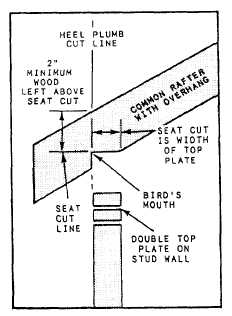Figure 2-15.—A “bird’s-mouth” is formed by the heel plumb
line and seat line.
various calculations, layouts, cutting procedures, and
assembly requirements required for efficient con-
struction.
GABLE
Next to the shed roof, which has only one slope, the
gable roof is the simplest type of sloping roof to build
because it slopes in only two directions. The basic
structural members of the gable roof are the ridgeboard,
the common rafters, and the gable-end studs. The
framework is shown in figure 2-13.
The ridgeboard is placed at the peak of the roof. It
provides a nailing surface for the top ends of the
common rafters. The common rafters extend from the
top wall plates to the ridge. The gable-end studs are
upright framing members that provide a nailing surface
for siding and sheathing at the gable ends of the roof.
Common Rafters
All common rafters for a gable roof are the same
length. They can be precut before the roof is assembled.
Today, most common rafters include an overhang. The
overhang (an example is shown in fig. 2-14) is the part
of the rafter that extends past the building line. The run
of the overhang, called the projection, is the horizontal
distance from the building line to the tail cut on the
rafter. In figure 2-14, note the plumb cuts at the ridge,
heel, and tail of the rafter. A level seat cut is placed where
the rafter rests on the top plate. The notch formed by the
seat and heel cut line (fig. 2-15) is often called the
bird’s-mouth.
The width of the seat cut is determined by the slope
of the roof: the lower the slope, the wider the cut. At
least 2 inches of stock should remain above the seat cut.
The procedure for marking these cuts is explained later
in this chapter. Layout is usually done after the length
of the rafter is calculated.
CALCULATING LENGTHS OF COMMON
RAFTERS.— The length of a common rafter is based
on the unit of rise and total run of the roof. The unit of
rise and total run are obtained from the blueprints. Three
different procedures can be used to calculate common
rafter length: use a framing square printed with a rafter
table; use a book of rafter tables; or, use the step-off
method where rafter layout is combined with calculating
length.
Framing squares are available with a rafter table
printed on the face side (fig. 2-16). The rafter table
makes it possible to find the lengths of all types of
rafters for pitched roofs, with unit of rises ranging from
2 inches to 18 inches. Let’s look at two examples:
Example 1. The roof has a 7-inch unit of rise and
a 16-foot span.
Figure 2-16.—Rafter table on face of a steel square.
2-11






